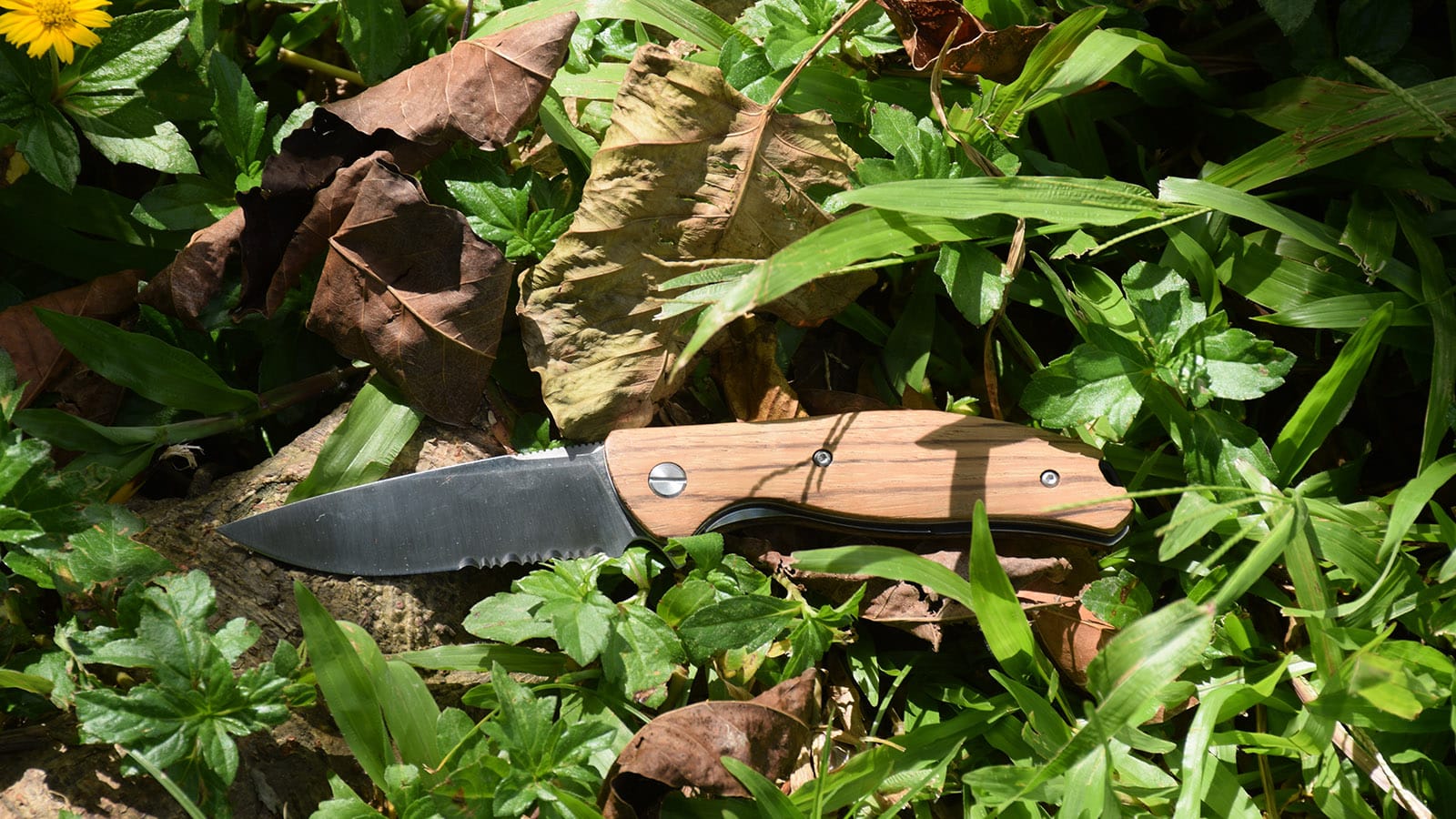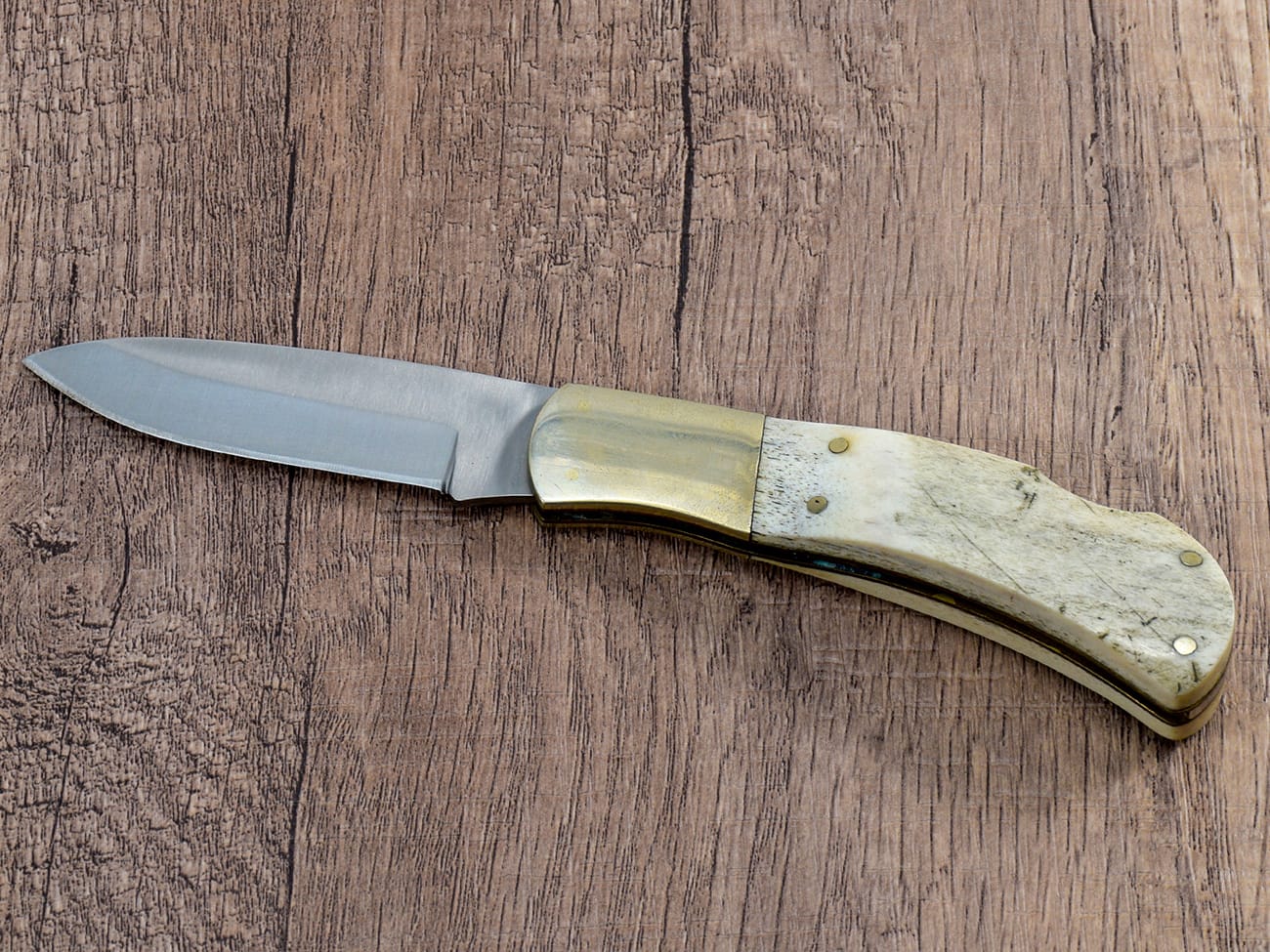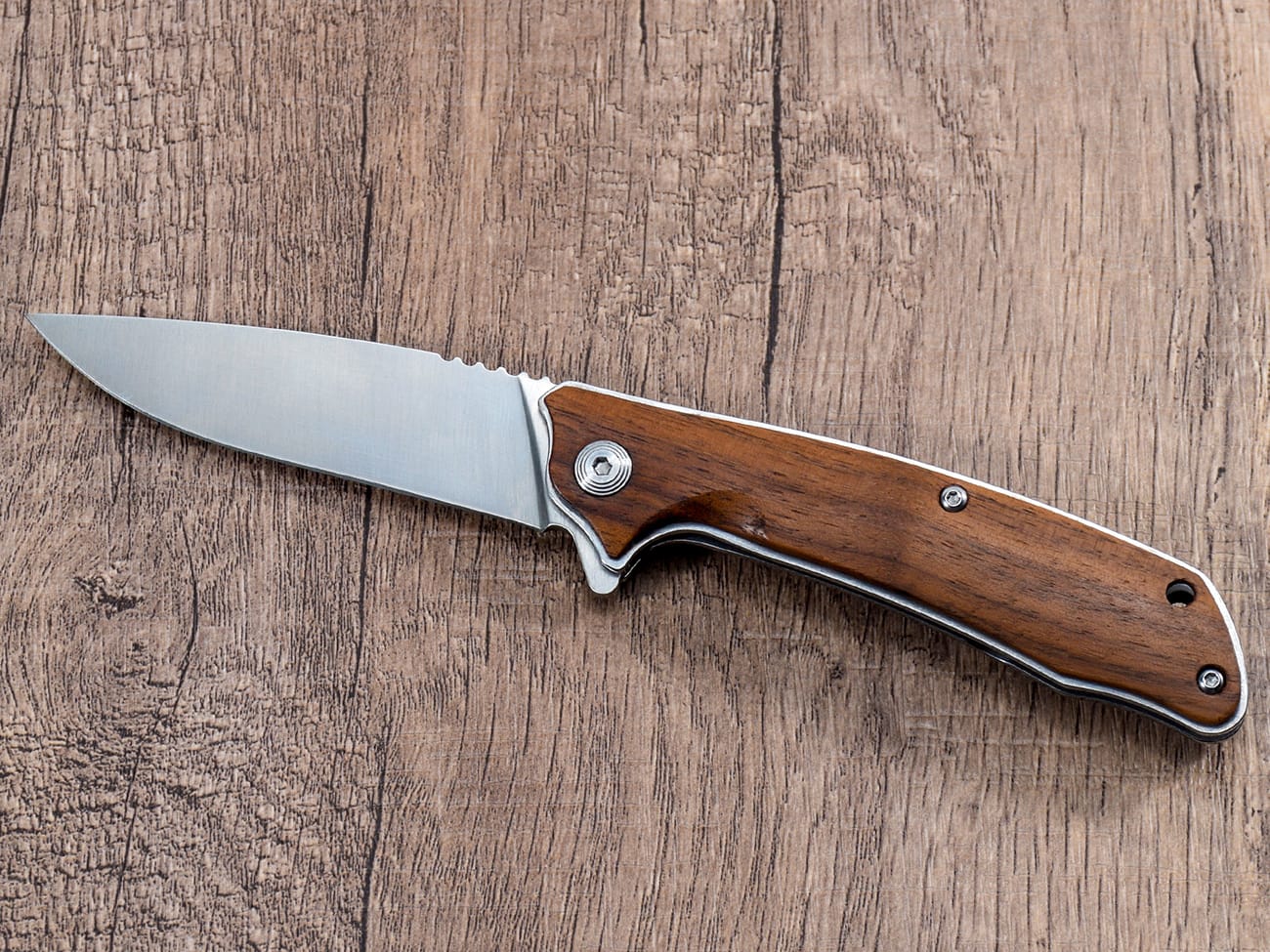¿Estás listo para llevar tus habilidades de fabricación de cuchillos al siguiente nivel? Ya seas un artesano experimentado o un principiante curioso, aprender a terminar correctamente una hoja de cuchillo es una habilidad esencial que puede elevar tus creaciones de buenas a extraordinarias. En esta guía completa, nos sumergiremos profundamente en el mundo del acabado de hojas, explorando varias técnicas, materiales y consejos de expertos para ayudarte a lograr ese acabado perfecto y de calidad profesional en las hojas de tus cuchillos. Desde lograr un pulido de espejo hasta crear una apariencia resistente y lista para la batalla, lo cubriremos todo. ¡Así que toma tu papel de lija y comencemos este viaje para dominar el arte del acabado de hojas de cuchillos!
¿Por qué es importante el acabado de la hoja?
Antes de profundizar en los detalles, tomémonos un momento para comprender por qué el acabado de la hoja es un paso tan crucial en el proceso de fabricación de cuchillos:
- Estética: Una hoja bien terminada es visualmente atractiva y puede aumentar significativamente el valor de su cuchillo.
- Rendimiento: Un acabado adecuado puede mejorar la capacidad de corte de la hoja y reducir la fricción.
- Resistencia a la corrosión: ciertos acabados pueden mejorar la resistencia de la hoja al óxido y otras formas de corrosión.
- Durabilidad: Un buen acabado puede proteger la hoja del desgaste, alargando su vida útil.
Ahora que entendemos la importancia del acabado de las hojas, exploremos las distintas técnicas y métodos que puede utilizar para lograr diferentes tipos de acabados.
¿Cuáles son los diferentes tipos de acabados de las hojas?
Existen varios acabados de cuchillas populares, cada uno con sus propias características y beneficios únicos. Veamos con más detalle algunos de los tipos más comunes:
- Acabado satinado
- Pulido de espejo
- Acabado lavado a la piedra
- Acabado ennegrecido o pavonado
- Acabado cepillado
- Patrón de Damasco
¿Cómo se consigue un acabado satinado?
El acabado satinado es una de las opciones más populares para las hojas de los cuchillos, ya que ofrece un equilibrio entre estética y funcionalidad. A continuación, le indicamos cómo crear un hermoso acabado satinado:
- Comience con una hoja limpia y desnuda
- Comience con papel de lija de grano más bajo (alrededor de 220) y avance hasta llegar a granos más altos (600-800).
- Lije en una dirección, con movimientos largos y uniformes.
- Progresa a través de los granos, limpiando la cuchilla entre cada etapa.
- Termine con una almohadilla Scotch-Brite fina para lograr una apariencia uniforme.
Consejo profesional: para obtener un acabado uniforme, utilice un bloque de lijado para mantener una presión constante sobre toda la superficie de la hoja.
¿Cuál es el secreto de un pulido de espejo?
Para lograr un acabado de espejo en la hoja se necesita paciencia y atención a los detalles. Siga estos pasos para obtener un resultado espectacular:
- Comience con el proceso de acabado satinado, trabajando hasta papel de lija de grano 1000.
- Pase al lijado húmedo, utilizando granos de 1500 a 3000
- Utilice un compuesto de pulido en una rueda de pulido.
- Termine con un pulimento fino, como rojo de joyero, para obtener ese brillo adicional.
Recuerde que un pulido de espejo luce increíble, pero puede requerir más mantenimiento para mantener su mejor apariencia.
¿Cómo se puede crear un acabado lavado a la piedra?
Un acabado lavado a la piedra le da a la hoja un aspecto resistente y usado, y también ayuda a ocultar los rayones. A continuación, le indicamos cómo lograr este aspecto tan popular:
- Comience con un acabado satinado
- Coloque la cuchilla en un recipiente con medios cerámicos o pequeñas piedras.
- Añade una pequeña cantidad de agua y jabón para platos.
- Déjalo secar durante 1 o 2 horas, comprobando periódicamente.
- Limpie y engrase la hoja una vez que esté satisfecho con el acabado.
¿Cuál es el proceso para ennegrecer o pavonar una hoja?
El ennegrecimiento o pavonado de una hoja puede brindar atractivo estético y mayor resistencia a la corrosión. A continuación, se muestra un proceso básico para pavonado en frío:
- Limpie bien la cuchilla con alcohol.
- Aplique una solución azul fría uniformemente sobre la hoja.
- Déjalo reposar durante el tiempo recomendado (normalmente unos minutos).
- Enjuagar con agua y secar completamente.
- Aplicar una capa ligera de aceite.
Nota: Este proceso funciona mejor con hojas de acero al carbono. Para hojas de acero inoxidable, es posible que deba utilizar un método diferente o contratar servicios profesionales.
¿Cómo se crea un acabado cepillado?
Un acabado cepillado le da a la hoja un patrón lineal distintivo. A continuación, le indicamos cómo lograrlo:
- Comience con un acabado satinado
- Utilice una almohadilla Scotch-Brite o un abrasivo similar.
- Pase la hoja en una dirección, manteniendo una presión constante.
- Continúa hasta lograr el aspecto deseado.
- Limpiar y engrasar la cuchilla
¿Cuál es el secreto para resaltar un patrón de Damasco?
El acero de Damasco es conocido por sus hermosos patrones en espiral. Para resaltar estos patrones, pruebe este proceso de grabado:
- Lije la hoja al menos hasta un grano 600.
- Limpie bien la cuchilla con acetona.
- Prepare una solución de cloruro férrico y agua (¡siga las precauciones de seguridad!)
- Sumerja la cuchilla en la solución durante 5 a 10 minutos.
- Neutralizar con bicarbonato de sodio y agua.
- Lije suavemente con papel de grano fino para resaltar el patrón.
Recuerde que trabajar con productos químicos puede ser peligroso. Priorice siempre la seguridad y considere buscar ayuda profesional si no está seguro.
¿Qué herramientas necesitas para el acabado de las cuchillas?
Para terminar con éxito las hojas de sus cuchillos, necesitará una variedad de herramientas y materiales. A continuación, le presentamos una lista básica para comenzar:
- Papel de lija (varios granos desde 220 a 3000)
- Bloques de lijado
- Rueda de pulido y compuestos
- Estropajos Scotch-Brite
- Tumbler (para acabado lavado a la piedra)
- Solución azul fría (para pavonar)
- Cloruro férrico (para grabar Damasco)
- Equipo de seguridad (guantes, protección para los ojos, respirador)
¿Cómo puedes proteger tu hoja terminada?
Después de todo el trabajo duro, querrá proteger su hermosa hoja terminada. A continuación, le ofrecemos algunos consejos:
- Aplique una fina capa de aceite regularmente.
- Guarde el cuchillo en un lugar seco.
- Limpie y seque la cuchilla después de cada uso.
- Considere usar una funda protectora
¿Cuáles son algunos errores comunes que debemos evitar?
Incluso los fabricantes de cuchillos con experiencia pueden cometer errores durante el proceso de acabado. A continuación, se indican algunos errores comunes a los que hay que prestar atención:
- Apresurándose a través de la arena
- Aplicar una presión desigual al lijar
- No limpiar entre granos
- Sobrecalentamiento de la hoja durante el lijado eléctrico
- Utilizar un acabado incorrecto para el uso previsto de la hoja
¿Cómo se pueden solucionar los problemas de acabado?
A veces, a pesar de todos los esfuerzos, las cosas no salen como se esperaba. A continuación, se indican algunos problemas habituales y cómo abordarlos:
- Acabado desigual: comience nuevamente con un grano más bajo y avance hacia arriba con cuidado.
- Rayones: Retire unos granos y lije hasta que los rayones desaparezcan.
- Decoloración: esto podría deberse a un sobrecalentamiento. Deje que la cuchilla se enfríe y vuelva a intentarlo.
- El grabado no funcionó: asegúrese de que la hoja esté completamente limpia e intente nuevamente con un tiempo de grabado más largo.
Conclusión: Dominando el arte del acabado de las cuchillas
Terminar la hoja de un cuchillo es un verdadero arte que combina la habilidad técnica con la visión creativa. Si comprende las diferentes técnicas y practica con regularidad, podrá llevar su habilidad para fabricar cuchillos a nuevas alturas. Recuerde que la clave para un gran acabado es la paciencia, la atención a los detalles y la voluntad de aprender de sus errores. Estos son los puntos clave que debe recordar:
- Elija el acabado adecuado para el uso previsto de su hoja
- Comience con granos más bajos y avance gradualmente.
- Mantenga una presión y dirección constantes mientras lija.
- Limpie su hoja entre cada etapa del proceso de acabado.
- Proteja su hoja terminada con el cuidado y almacenamiento adecuados
- No tengas miedo de experimentar con diferentes técnicas.
Ya sea que estés Creación de un cuchillo de caza personalizado con mango de madera de rosa y hoja lijada. o elaborar una Navaja plegable de Damasco con mango de madera y clip de bolsillo.Dominar el arte del acabado de las hojas llevará tus creaciones al siguiente nivel. ¡Sigue practicando, mantén la curiosidad y, lo más importante, disfruta del proceso de darle vida a tus diseños de cuchillos!

Un cuchillo de caza personalizado con un hermoso acabado, mango de madera de rosa y hoja lijada.Recuerde, ya sea que esté trabajando en un Navaja plegable de madera de olivo de acero inoxidable 8cr13mov de 3,54 pulgadas o un Navaja plegable personalizada de acero D2 con mango G10 y bloqueo de ejeEl proceso de acabado puede marcar la diferencia en el producto final. ¡Feliz fabricación de cuchillos!




